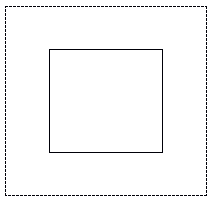
LBitmap::LocalHistoEqualize
#include "ltwrappr.h"
virtual L_INT LBitmap::LocalHistoEqualize (nWidthLen, nHeightLen, nxExt, nyExt, uType, uSmooth)
|
L_INT nWidthLen; |
/* width of the local histogram equalizer rectangle */ |
|
L_INT nHeightLen; |
/* height of the local histogram equalizer rectangle */ |
|
L_INT nxExt; |
/* width extension */ |
|
L_INT nyExt; |
/* height extension */ |
|
L_UINT uType; |
/* color space */ |
|
L_UINT uSmooth; |
/* smoothing size */ |
Linearizes the number of pixels locally in a bitmap, based on the specified color space. This can be used to bring out the detail in dark areas of an image, and smooth the edges between blocks. This function is available in the Medical Toolkits.
|
Parameter |
Description |
|
|
nWidthLen |
The width of the local histogram equalizer rectangle in pixels. The width should be more than zero. |
|
|
nHeightLen |
The height of the local histogram equalizer rectangle in pixels. The height should be more than zero. |
|
|
nxExt |
The extension of the width of the local histogram equalizer rectangle, in pixels. |
|
|
nyExt |
The extension of the height of the local histogram equalizer rectangle, in pixels. |
|
|
uType |
Flag that indicates which color space to equalize. Possible values are: |
|
|
|
Value |
Meaning |
|
|
RGB_SPACE |
[0x0001] Linearize the number of pixels across the RGB color space. (Separated channels) |
|
|
YUV_SPACE |
[0x0002] Linearize the number of pixels across the YUV color space.(Best results) |
|
|
GRAY_SPACE |
[0x0004] Linearize the number of pixels per gray level in a gray level representation of the image. |
|
uSmooth |
Size of the area to be used when smoothing the edges between localized blocks. Possible values range from 0 to 7, but if nHeightLen is less than or equal to 7 then the maximum value for this item is nHeightLen - 1. If uSmooth = 0 the function will operate without smoothing edges. |
|
Returns
|
SUCCESS |
The function was successful. |
|
< 1 |
An error occurred. Refer to Return Codes. |
Comments
This function applies the histogram equalizer locally on the image. The image is divided into local rectangles of dimension (nWidthLen, nHeightLen). The pixels inside each local rectangle are linearized according the histogram calculated for an extended rectangle around each local rectangle. The extended rectangles are of dimension
((nWidthLen+2 * nxExt) , ( nHeightLen + 2 * nyExt)).
For an example, see the following drawing:

A rectangle and its associated extension, where the histogram is calculated.
Use this function to bring out details in an image that has portions that are too dark or too bright. An example of this is a picture taken with a flashlight in a dark room. In such a picture, the subject receives good light while the background is very dark. The application of the local histogram brings out details, but creates a blocky artifact. Use uSmooth to reduce the blockiness of the result.
This function supports 12 and 16-bit grayscale and 48 and 64-bit color images. Support for 12 and 16-bit grayscale and 48 and 64-bit color images is available only in the Document/Medical toolkits.
This function does not support 32-bit grayscale images. It returns the error code ERROR_GRAY32_UNSUPPORTED if a 32-bit grayscale image is passed to this function.
Required DLLs and Libraries
|
LTIMGCLR For a listing of the exact DLLs and Libraries needed, based on the toolkit version, refer to Files To Be Included With Your Application. |
See Also
Example
L_INT LBitmap__LocalHistoEqualizeExample(LAnimationWindow * pAniWnd)
{
return pAniWnd->LocalHistoEqualize(15,15,100,100, YUV_SPACE,2 );
}